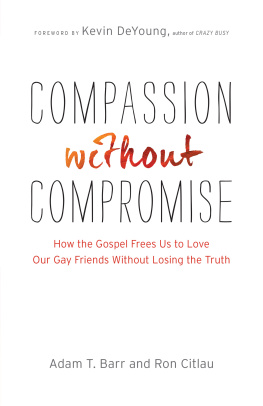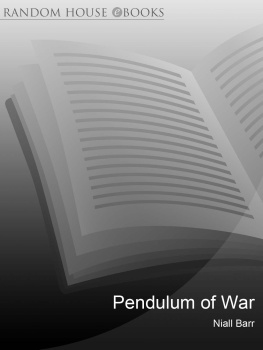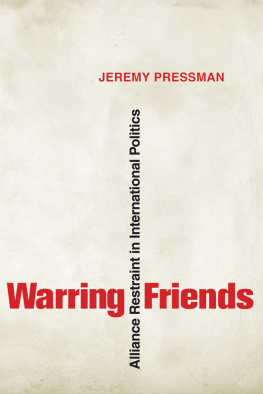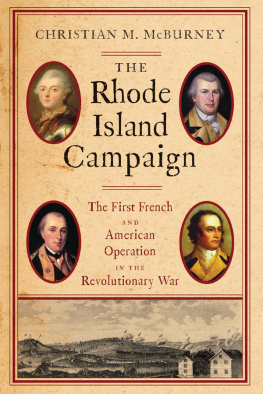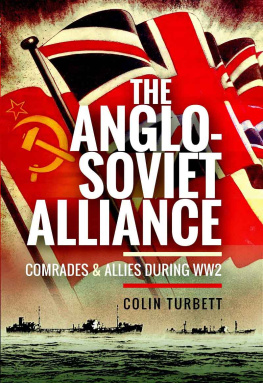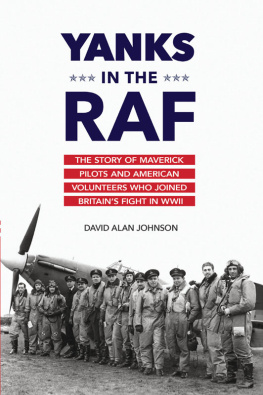EISENHOWERS
ARMIES
THE AMERICANBRITISH ALLIANCE
DURING WORLD WAR II

NIALL BARR

PEGASUS BOOKS
NEW YORK LONDON
Contents
Allied landings in North Africa, November 1942

Italy, 194345

The Normandy Campaign JuneAugust 1944

The North West Europe Campaign, 194445
EISENHOWERS ARMIES
Introduction
One of the great pleasures of working at the Joint Services Command and Staff College in Shrivenham is that almost every day I walk past some outstanding work of art portraying Britains military past. There is a sculptors macquette of an equestrian figure that holds particular resonance for me, and although it is placed in the forum of the building, where hundreds of students and staff congregate, few recognise the figure or are aware of its significance. The mounted figure is Field Marshal Sir John Dill, and the full-size bronze statue cannot be seen on the Mall or in Whitehall in London, but in Arlington National Cemetery, Washington,DC. Dill is indeed virtually unknown in Britain today, yet he played a crucial part in cementing the military relationship between Britain and America in the Second World War. It was this almost daily reminder of the Anglo-American alliance that ultimately led to the creation of this book.
It might be questioned why another book on the Anglo-American alliance in the Second World War is necessary. Celebrated at the time, and commented upon endlessly since, the experience of the wartime alliance between the two countries has become almost the foundation myth of what has often been called the special relationship, one that has waxed and waned over the succeeding decades. There is little doubt that the shared crisis of that war brought Britain and America closer than ever before, or ever again.
Once the United States became committed to the war in Europe, the two allies cooperated in an unprecedented way. While the personal relationship between Prime Minister Winston Churchill and President Franklin D. Roosevelt was vital in smoothing over many issues and arguments, the level of military cooperation achieved was equally crucial. An internal British staff history noted that The complete integration of Anglo-American Planning and Intelligence during World War II, like many other aspects of the direction of the War, was something which had not been attempted previously in history as between Allies.
This is not to deny that the well-known strategic disagreements between the allies were serious or, on occasion, threatened the cohesion of the alliance; what was remarkable was that such diverging views were aired jointly within an organisation that enabled the alliance to continue. The fact that it held together and reached a successful conclusion in 1945 was proof of its overall effectiveness. Nonetheless, there were numerous frictions and frequent instances of members of both armies becoming frustrated by the inefficiency of having to work with a partner rather than acting simply as an independent national army.
Not surprisingly, commentators and historians have attempted and scholars have also worked to assess the diplomatic, economic and social factors involved in the collaboration. But at root, this was primarily a military alliance, which saw the resources of the British and American navies, armies and air forces fused into one. This book thus aims to trace the relationship between the British and American armies throughout the conflict. In so doing, it explores how the relationship developed over time from rather inauspicious beginnings. It also takes account of the breadth and depth of an association that began far from the battle fronts and well outside the purview of any of the later famous commanders. This can only be achieved by examining the high-level strategic decisions, as well as the operational choices of the commanders in the field and the way in which ordinary soldiers worked and fought alongside one another. Above all else, I have attempted to provide as balanced an account as possible, which I hope does not succumb to the partisanship of believing that the right answers to the problems faced by either army lay on just one side of the Atlantic.
Within this broad remit, the book concerns itself solely with the European theatre; the relationship of the two armies in the Far East was very different and beyond the scope of this work. It does not attempt to explore the relationship between the two navies or air forces. At no point can the book be considered an exhaustive history of the alliance or of the campaigns fought by either army. It is, rather, about two armies as they fought in the largest war in history, and an attempt to explain how they cooperated, learned from, and also, at times, ignored one another. Tracing the path followed by the two armies also helps to assess whether they were able to fight effectively alongside one another. One of the most vexed questions of any military alliance is whether the hard-won lessons of one army can be learnt by its partner. Examining how two armies cooperated is always difficult, since their main focus is, understandably, the enemy, rather than their relationship with their ally. This means that the true nature of the cooperation often leaves only fragmentary traces in the historical record. Armies, which by their nature represent an expression of national will and power, have often found cooperation with allies difficult. The history of alliance warfare has often been a doleful tale of rivalry, distrust, recrimination and defeat.
There remains a cloud of nostalgia and a haze of myths concerning the relationship between the United States and Great Britain during the Second World War that can obscure the reality of the partnership and make it difficult for us to properly understand the value and effectiveness of the military cooperation that led to ultimate victory. Given the attention lavished upon it, the Anglo-American alliance can often be mistaken for an isolated case rather than as simply part of a long history of alliance warfare. And just as the colossal figures of Roosevelt and Churchill can obscure as much as they reveal about the reality of the political relationship between the US and Britain, so too can the iconic personas of Eisenhower, Patton and Montgomery hinder our view of the collective endeavours of the two armies during the war. This book seeks to show how the relations between these generals evolved over the course of the war, but also to show that their relations did not necessarily impact on much of the essential cooperation that went on, almost unnoticed, at the time.
It is, of course, impossible to encompass all of the many and varied facets of this relationship, from the strategic to the tactical, in a single volume. One of the methods used is to emphasise the efforts of a multitude of individuals famous and otherwise who worked together to defeat Hitlers Germany. Thus the book offers a series of snapshots of events, people and personalities operating at many different levels that were key to the functioning and development of the military relationship. Characters such as Raymond Lee, the US attach in London in 1940, Bonner Fellers, the US attach in Cairo in 19412, and Charles Bolte, one of the early US observers in Britain, can give a different and much less well-known picture of what the cooperation and competition between these two armies was really like. Their tales are woven into a wider narrative that tries to make some sense of the course of the war while also illustrating how the imperatives of the conflict changed the relationship between the armed forces of Britain and America.
Next page



